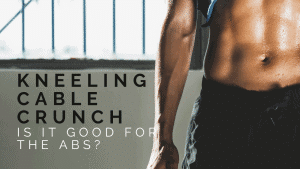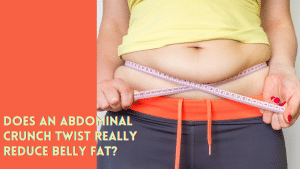Are ab crunches on a ball better than on the floor?
With so many abdominal exercises out there promising the best results, it can be quite challenging to determine which one is really the most effective. Over the years, variations to traditional abdominal exercises have come and gone, but crunches remain one of the go-to ab workouts of beginners and long-time fitness enthusiasts alike.
Adding a stability ball to this classic exercise makes it even more fun! But not only does the ball make crunches more enjoyable, it also comes with benefits that traditional crunches do not give. So, does this mean that crunches using a ball are better than typical crunches on the floor?
To ball or not to ball
The answer is an absolute yes! Traditional crunches can get boring over time, not to mention, can also cause damage to your spine if done too often, incorrectly, and without proper form. Incorporating a stability ball in your crunches will help mitigate this risk. Since the surface of the ball is soft compared to the floor, there is less tension to the spine. And since pain is less, movement is more precise.
Crunches on a stability ball are also relatively easier—or feel easier, at least. Because the ball makes it less painful, using it while doing crunches gives the illusion that you are not putting that much effort than you actually are, when in reality, you are likely able to do more repetitions because the ball provides more comfort.
Muscle diversity
Another reason to start doing crunches on a stability ball is the activation of more core muscles that are normally not put into action in traditional crunches.
In a study conducted by researchers at the Department of Kinesiology at Occidental College in Los Angeles, crunches using a ball were found to have enhanced stimulation of the abdominal muscles by 24%-38% compared to crunches without a ball. This was determined by fitting the participants in the study with electromyographic equipment that recorded increased activity in the upper and lower abdominal area, as well as the obliques.
This increased activity can be attributed to smaller core muscles being engaged as they try to balance the body on the ball. These smaller core muscles are the ones which are normally overlooked in traditional crunches, but with the inclusion of a ball in the exercise, the stabilizer muscles in the core are forced to activate to keep you on the ball.
Aside from the smaller core muscles, crunches on a stability ball also activated all the major core muscles to a higher degree. Because of its uneven surface, the rectus, abdominals, and the obliques are hit harder. With this, sculpting your abdominals for a flat stomach or your obliques for a smaller waist may become easier.
More comprehensive exercise
Just when you thought the benefits of crunches on a ball couldn’t get any better, the study also found that a stability ball can improve posture, prevent back pain and injury, increase lower back strength, and support the spine.
Moreover, if prominent abs is what you are really after, then ball crunches are the way to go. Since crunches on the floor involve the legs more than the abs, crunches on a ball could be more ideal for you because in that exercise, the abs do most of the work.
Getting to know your abs
Many people want to enhance the way their abs look, but many people also do not know what specific muscles they are working out whenever they are doing abdominal exercises. To most of us, abs is just the six-pack, but that is simply not the case.
The abdominal muscle system is made up of three main muscle groups, with the rectus abdominis being the most targeted by most abdominal exercises. The rectus abdominis is an external pair of muscles that run vertically from the sternum to the pubic bone, and when hypertrophied, result to a prominent six-pack.
Lying under the rectus abdominis is the transverse abdominis. These muscles are not usually targeted in traditional abdominal exercises like crunches, but they are the deepest abdominal muscle. Its fibers run horizontally, which is why it is also called the girdle muscle because it is responsible for tucking your tummy in,
Lastly are the external and internal obliques. The external oblique is the most superficial muscle on both sides of the abdominal region, with the internal oblique just beneath it. The fibers of this muscle group run diagonally which allows the trunk to rotate and helps stabilize the spine.
Ball crunches the proper way
Perhaps now you are becoming more inclined to start doing crunches on a ball, but what is the proper way to do it to achieve the best results? Follow these steps and get started:
- Choose a ball that is firm and almost the same height as your knees.
- Sit on the ball and make sure that your knees are bent at a 90-degree angle.
- Find your balance and slowly roll back while walking your feet out, allowing your lower back to rest on the ball. This will help maintain proper form throughout the exercise to avoid over extension of the lower back. Sometimes, doing crunches on the floor enables the tendency of the lower back to arch to create momentum, which is not healthy because it puts the spine in a compromising position
- Put your arms across your chest or behind your head. If you want to do a more challenging crunch, extend your arms all the way over your head.
- Now, start crunching. In order to do this, you need to engage your core first and tighten your abdominals. Since this is an action that requires conscious effort, you need to focus on tensing that specific muscle first.
- Contract your core and tighten your glutes to bring your torso upward and off the ball. As you lift your torso, balance yourself with your lower back, legs, and glutes to keep the ball from rolling. The most common mistake while doing ball crunches is putting the force on your neck instead of the chest and shoulders. One way to avoid this is to choose a point in the ceiling to focus on so that the neck stays in a neutral position.
- In a controlled manner, lower your torso back to the ball to stretch the abs.
- Do 1-3 sets of 12-16 repetitions while making sure that the abs remains tightened throughout this exercise.
More ab exercises to try with a stability ball
Once you have invested on a stability ball, don’t just do crunches! That ball has a lot of potential and so do you, so you should be making the most out of it and try other abdominal exercises. Here are a few exercises to get you started:
Oblique crunches
You already know that normal crunches on a ball activate the obliques to a higher degree, but doing oblique crunches specifically will take that to another level.
To do this, start in the same position as your regular ball crunch. Brace your core by contracting your abs. Now, tighten glutes for support and slowly crunch up to the right. Make sure you are lifting your shoulders off the ball as you rotate your upper body to the right. Lower your shoulders back to the ball and repeat on the left side.
Knee raise
Let’s involve more body parts, shall we?
As you balance yourself on the ball while bracing your core, bring your right foot upward and pull your right knee towards your chest. Slowly bring your right foot back to the ground and do the same for the left side.
Bicycle crunch
If you think a regular bicycle crunch is already challenging, think again. But what is an exercise without an added challenge, right?
Start by putting your hands behind your head, then tighten your core and lift your torso off the ball. As you do this, raise your right knee towards your chest and rotate your upper body so that your left elbow touches your right knee. Lower your right foot back to the ground and your torso back to the ball at the same time, and then do the other side.
Tuck
Balance is vital for this next exercise.
To start, position yourself in a high plank where your wrists are under your shoulders, your core is tightened, and the top of your feet are resting on the ball. Make sure your hips are straight, and then use your core to pull your knees towards your chest, rolling the ball with it. Slowly straighten your legs to go back to your initial position.
Hip thrust
This is a great compound exercise because this will engage not only your core, but your legs, glutes, and hamstrings as well.
To start, lay down on the floor with your arms resting on the side for support. Then lift your legs and let your heels rest on the ball. Now lift your hips and torso off the floor. Begin movement by bracing your core and bending your knees to pull the ball towards you. As you do this, make sure your glutes and hamstrings are squeezed, and your engaged core is maintained. Slowly straighten your legs to return to your initial position.



